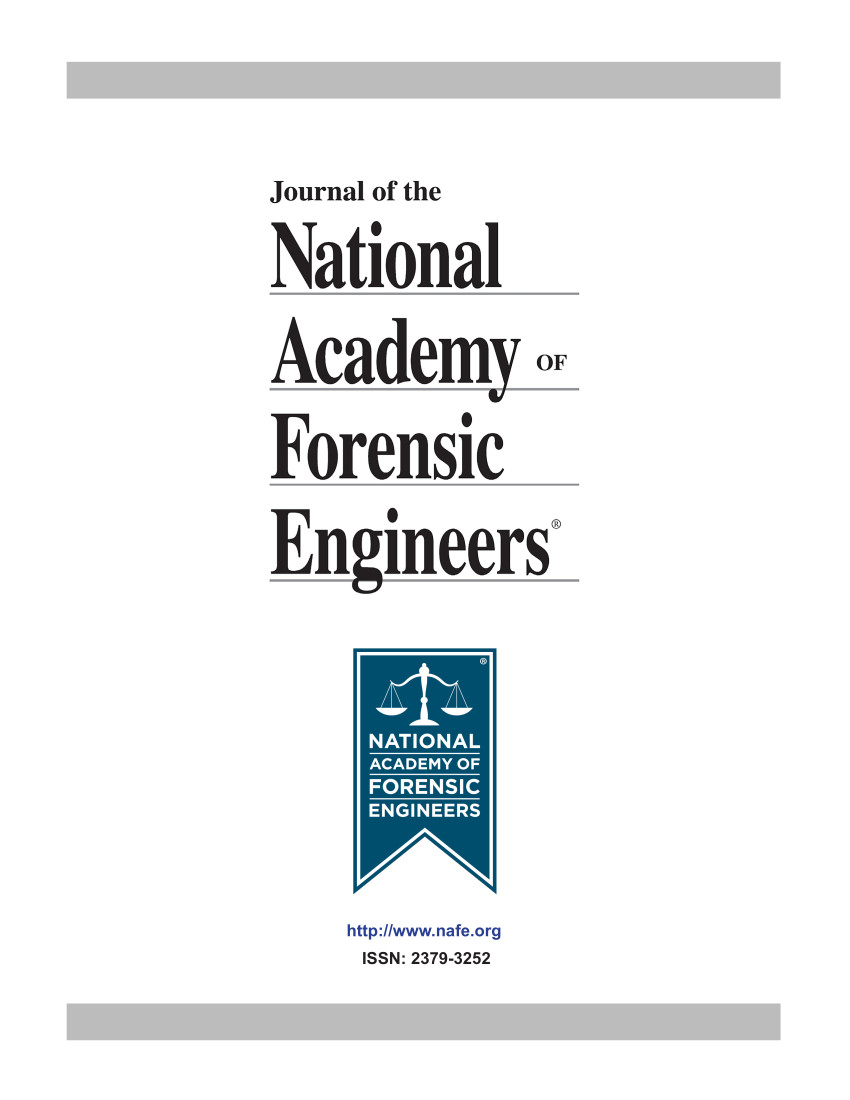Forensic Engineering Analysis Of Firearm Silencers
DOI:
https://doi.org/10.51501/jotnafe.v26i2.716Keywords:
Firearms, silencersAbstract
Firearms Use Comes With A Number Of Potential Health & Environmental Hazards Due To The High Noise Levels Generated. Noise Reduction Is Clearly A Desirable Goal. Firearm Silencers Are Often More Correctly Referred To As Sound Suppressors, Sound Moderators, Or Mufflers In The Interests Of Consistency With Federal Legislation, The Term Ilencershall Be Used Throughout This Paper. Firearm Silencers Are Legal For Civilian Ownership And Use In The Majority Of Us States, Though They Are Heavily Regulated. In States Where Silencers Are Legal Their Regulation Is Typically Accomplished At The Federal Level, Though Many States Do Have Their Own Laws. This Paper Focuses On Federal Legislation And Its Administration, Enforcement, And Litigation. Until 1934 There Were No Restrictions On Silencer Ownership And Use By Private Individuals. In 1934 Congress Passed The National Firearms Act (Nfa) Which Had The Net Effect Of Making Silencer Manufacture, And Possession By Private Citizens, A Prohibitively Costly And Administratively Burdensome Endeavor. The Nfa Legislation Is Articulated In Title 26 Of The United States Code, And The Federal Law Is Administered And Enforced By The Us Department Of Justice (Doj) Via The Bureau Of Alcohol, Tobacco, Firearms, And Explosives (Batfe). Commercially Available Silencers Reduce The Muzzle Report Of A Firearm By Reducing Peak Sound Pressure By 30 To 40 Decibels (Db). A 223 Remington (5.56mm Nato) Caliber Rifle Will Typically Generate Around 160 Db Without A Silencer, And Just 120 To 130 Db With A Typical Commercially Available Silencer Installed. Some Individuals Construct Homemade Silencers, With Varying Degrees Of Success. Federal Prosecutors, Possibly Prompted By An Overzealous Batfe, And Following The Letter Of The Law, Feel Justified In Prosecuting Cases Where The Alleged Silencer Reduces The Noise Generated By Just A Few Db. The Law Defines, In Part, A Silencer, Or Muffler, As Ny Device For Silencing, Muffling, Or Diminishing The Report Of A Portable Firearm This Is A Very Vague Definition, And In Strict Technical Terms It Could Include Legitimate Technologies, Such As A Lengthened Barrel, A Muzzle Brake, Or A Flash Hider, All Of Which Will Diminish, Or Redirect, The Noise Of A Gunshot. Understanding Sound, And Sound Measurement, Is Not Easy, And This Fact Coupled With The Loose Legal Definition Of What Constitutes A Silencer Leads To The Prosecution Of Many Individuals Who, Either Deliberately Or Inadvertently, Have Procured Or Created A Device For Their Firearm That Reduces The Measured Report By Only A Small Amount. A Study Published By The American Medical Association1 Revealed That Recreational Shooters Suffered Hearing Damage Following Very Limited Exposure To Firearms Noise, And That Damage Occurred Even When Shooters Wore Hearing Protection. Paradoxically, In An Age When Both Legislators, And The Population At Large, Are Obsessed With Environmental And Health & Safety Issues, We Have Outdated Legislation In Place That Actually Works To Make An Everyday Item Less Safe For The User, And Less Environmentally Friendly From The Perspective Of Those In The Vicinity Of The User. We Have Legislation That Seeks To Limit The Noise Produced By Motorcycles And Other Motor Vehicles While, Concurrently, We Have Legislation That Makes It Illegal (Or Prohibitively Burdensome & Expensive) To Attempt To Reduce The Dangerous Noise Produced By Firearms. The Injustices And Difficulties Resulting From Poorly Drafted Legislation Have Been Compounded By The Use Of Outdated Batfe Testing Protocols. To Their Credit, Batfe Appear To Have Been Receptive To The Use Of New Technology And Things Have Improved Somewhat In Recent Years. Sound Measuring Equipment With A Data Sample Time Interval Short Enough To Accurately Capture A Gunshot Is Expensive, And Interpretation Of Results Is Difficult For Those Not Well Versed In The Technical Intricacies Of Acoustics. This Paper Includes Two Case Studies. The First Case Study Demonstrates How Outdated Test Protocols And Inappropriate Equipment Lead To Potentially Misleading Results. The Second Case Study Demonstrates How An Overzealous Prosecution Expert Can Paint A Misleading Picture Of An Alleged Homemade Silencer. It Is Concluded That Current Legislation Relating To Silencers Provides Vague Technical Definitions, Leads To Unnecessary And Expensive Prosecutions, Has A Significant Adverse Affect On The Health Of The Nation, And Raises Significant Legal, Administrative, And Financial Barriers To Those Firearms Owners Who Wish To Maximize Safety And Minimize Environmental Impact.Published
2009-01-01
How to Cite
Nixon, John. 2009. “Forensic Engineering Analysis Of Firearm Silencers”. Journal of the National Academy of Forensic Engineers 26 (2). https://doi.org/10.51501/jotnafe.v26i2.716.
Issue
Section
Articles
License
Copyright (c) 2009 National Academy of Forensic Engineers

This work is licensed under a Creative Commons Attribution-NoDerivatives 4.0 International License.
All rights © Journal of the National Academy of Forensic Engineers.
Full statement regarding the author's license of copyright to the NAFE is shown on the Copyright section of the Submissions Page.






